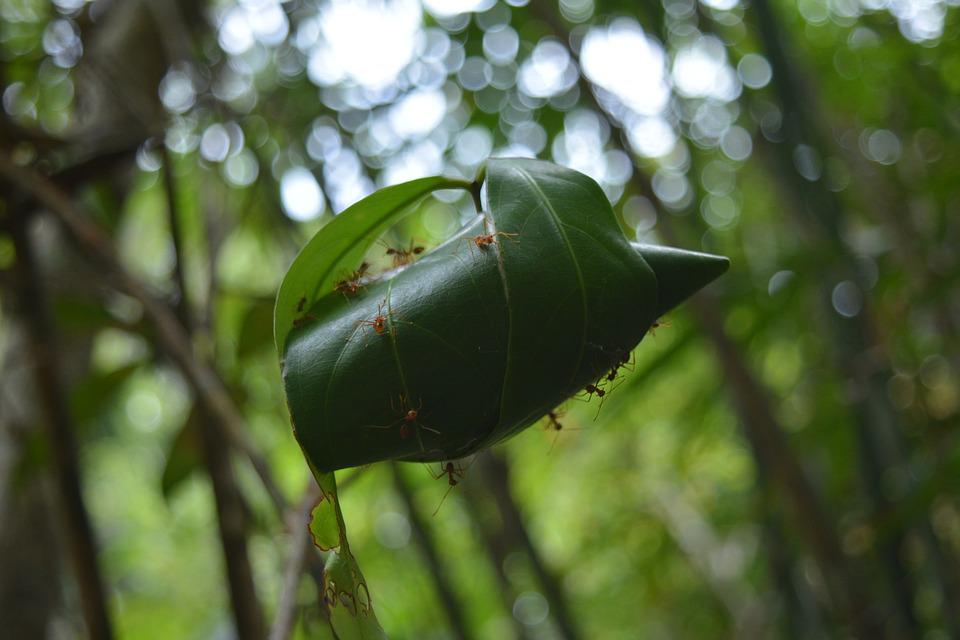GI tag for India’s red ant chutney to set tables on fire
For centuries, the Red Ant Chutney, a unique delicacy has remained hidden in the dense forests inhabited by numerous tribal communities in Eastern and Central India. Made of red ants and their eggs, it is a paste that is served as a chutney to go as an accompaniment to any meal. It is highly sought-after, especially by the people of Bastar area of Chhattisgarh and Mayurbhanj district in Odisha, called Chaprah or literally, a leaf basket, in reference to the nests that ants construct from the leaves of the sal tree, or the Kai Chutney (as is referred by the Odias).
So far, the extremely hot chutney has remained unknown to the outside world, even in most parts of India. But if efforts of a group of scientists pay off, the chutney may soon be setting dining tables across the world on fire. Serious efforts are on to obtain a Geographical Indication or GI tag, which offers the chutney and its provenance a protection from imitation and is often the game changer for many of the world’s most popular delicacies today.
The first step to prepare Cheenti ki Chutney starts with the search for ants in the forests, primarily the mango and sal trees, that are amongst the most common trees in these areas. Amongst the tribals here, a sal tree is also known as House of Tribal Goddess. Some tribes in Chattisgarh call these ants Bemta in their native language. When it is time to lay eggs, the ants start building anthills under these trees by covering them with the leaves. They glue the leaves together with their saliva or the sticky secretions of the trees. Male ants protect egg-laying females by surrounding themselves around the nest. When hunting the ants, the tribals smash the male ants first and put them in their bags, then move to female ants and their eggs to bring them home.
Also Read – Food review: North Indian food made suitable for subtle palates.
The villagers smash the nests to dry the ants and eggs together, before grinding them using a mortar and pestle to create the chutney. Then with the addition of tomatoes, coriander, garlic, ginger, red chillies, salt, and a little sugar, a smooth orange paste is created. In order to add more taste to the mixture, they occasionally add oil and finely chopped onions.
“Cheenti Ki Chutney has a flavour that is a blend of sour, bitter, and spicy, and it is full of many health advantages, including the ability to fight stomach infections. This chutney is a favourite among locals because it is also one of the best-tasting chutneys,” Jimmy Jayanth Tigga from Jashpur in Chhattisgarh tells Media India Group.
The red ant chutney is really spicy because of high formic acid content of the ants and the additional ingredients used in the chutney. It is a mixture of hot and sour flavours, which are also reportedly to strengthen one’s immunity system and have other health benefits. Formic acid, which is present in these ants and their eggs has numerous antibacterial qualities, which help fight bacterial infections in the digestive system. The chutney is also well known for having a good amount of calcium, zinc, and protein, all of which are beneficial to the immune system.
In Odisha, a group of scientists is working towards making a presentation for the geographical indication registry for the chutney. They say that a GI tag would help a hygiene protocol in preparation of Cheenti Ki Chutney for standard use and enhance the reputation, value and support for the chutney and also make it popular outside the tribal areas, eventually reaching the global food markets.
These razor-sharp red ants are commonly found across the Bastar region of Chhattisgarh jungles. The chutney is fairly well-liked in many of Chhattisgarh’s tribal villages. At marketplaces, vendors offer the chutney wrapped in tiny sal leaves. A warning for first-timer users. Use in moderation as the chutney is really spicy.
Also Read – Street Food from old Delhi










